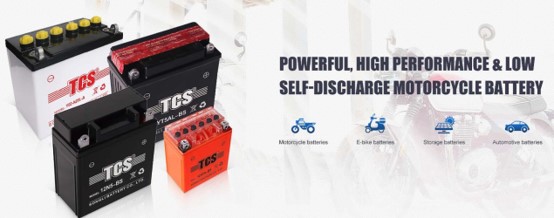What You Need to Know About Motorcycle Batteries
When you are selling or using a motorcycle battery, the following points are what you need to know in order to help you better protect your battery and extend the battery life.

1.Heat. Excessive heat is one of the worst enemies of a battery’s life. Battery temperatures exceeding 130 degrees Fahrenheit will dramatically reduce longevity. A battery stored at 95 degrees will discharge twice as fast as a battery stored at 75 degrees. (As temperatures rise, so does the rate of discharge.) Heat can virtually destroy your battery.
2.Vibration. It is the next most common battery killer after heat. A rattling battery is an unhealthy one. Take the time to inspect the mounting hardware and let your battery live longer. Installing rubber supports and bumpers in your battery box can’t hurt.
3.Sulfation. This happens because of continuous discharging or low electrolyte levels. Excessive discharge turns lead plates into lead sulfate crystals, which blossom into sulfation. It’s usually not a problem if the battery is properly charged, and electrolyte levels are maintained.
4.Freezing. This shouldn’t bother you unless your battery is inadequately charged. Electrolyte acid becomes water as discharge occurs, and water freezes at 32 degrees Fahrenheit. Freezing can also crack the case and buckle the plates. If it freezes, chuck the battery. A fully charged battery, on the other hand, can be stored at sub-freezing temps with almost no fear of damage.
5. Prolonged inactivity or storage: Prolonged inactivity is the most common cause of a dead battery. If the battery is already installed on the motorcycle, it is best to start the vehicle once every other week or two during the parking period, and charge the battery for 5-10 minutes. It is recommended to unplug the negative electrode of the battery for a long time to prevent the battery from running out . If it is a brand new battery, it is recommended to store the battery after it has been stored for more than 6 months before charging it to avoid loss of power.